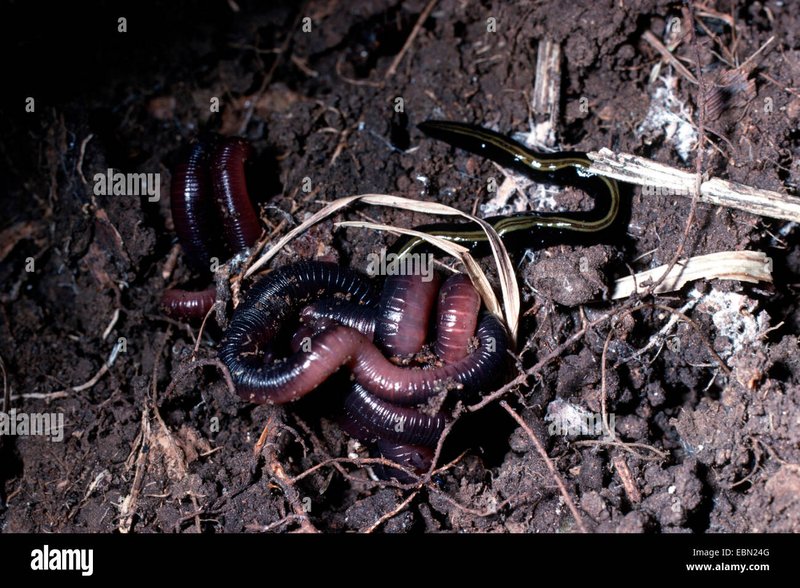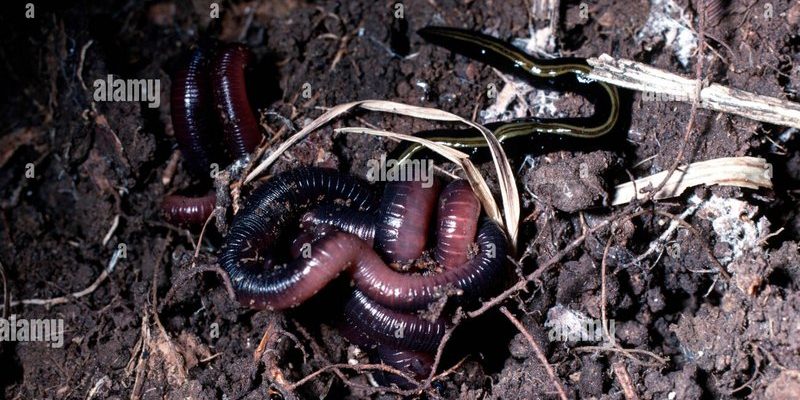
Imagine the soil as an intricate web, where every strand plays a part in creating a thriving environment for plants and animals alike. Just as a spider’s web captures dew, earthworms, like the Giant Gippsland, help enrich this web. So, let’s dive into the world of these fascinating worms and explore how they contribute to both soil and aquatic ecosystems. You might just find yourself seeing them in a new light!
What Are Giant Gippsland Earthworms?
The Giant Gippsland Earthworm is a unique species found primarily in the Gippsland region of Victoria, Australia. These worms can reach lengths of up to three meters, hence their name “giant.” What’s even more interesting is their impressive girth; they can be as thick as your finger! This length is more than just a party trick—these earthworms are essential for the local environment.
They typically live in deep burrows, which they create in moist, clay-rich soils. This habitat is vital for their survival. Their burrowing action aerates the soil, improving its structure and drainage. To many, these worms might look like simple creatures, but they engage in a complex dance that benefits the ecosystem. Honestly, it’s pretty amazing how something so seemingly basic can have such a big impact!
How Do They Benefit Soil Ecosystems?
Giant Gippsland Earthworms play several roles in promoting healthy soil. Here’s how:
- Aeration: As these worms burrow through the soil, they create channels that allow air and water to penetrate deeper layers. This helps plant roots access nutrients more easily.
- Nutrient Cycling: When earthworms consume organic matter, they break it down and produce nutrient-rich castings (worm poop). This process enriches the soil with essential nutrients like nitrogen and phosphorus, which are crucial for plant growth.
- Soil Structure Improvement: Their burrowing helps improve soil structure, making it more crumbly and less compact. This is important for plant health and helps prevent erosion.
If you’ve ever dug in healthy garden soil and felt it crumble in your hands, you’ve likely experienced the results of these hard-working worms. You might be wondering—why focus on just one species? Well, the Giant Gippsland Earthworm serves as a key indicator of soil health. If they thrive, it means the environment is doing well.
Role in Aquatic Ecosystems
You may not think of earthworms when discussing aquatic life, but the Giant Gippsland Earthworm has an indirect role in nearby aquatic ecosystems as well. Their activity influences water quality and availability, impacting both terrestrial and aquatic environments.
For starters, when rainfall occurs, the burrows created by these worms allow water to seep into the ground rather than pooling on the surface. This helps recharge local waterways, keeping streams and rivers healthier. In addition, the organic matter they create contributes to the nutrient balance in nearby water bodies. Healthy soil leads to productive landscapes, which ultimately feed into aquatic systems.
Imagine a farmer’s field: if the soil is rich and well-structured, it supports healthy crops. When it rains, instead of washing away, the water percolates into the ground, ensuring that nearby rivers and lakes don’t get overwhelmed with runoff. What’s not to love about that?
The Threats to Giant Gippsland Earthworms
Despite their importance, Giant Gippsland Earthworms face several threats. Urban development, agricultural practices, and climate change are all challenges that put these remarkable creatures at risk.
Urbanization often leads to habitat destruction, as their natural environments are cleared for buildings and roads. When the soil is compacted or treated with chemicals, it can significantly affect their ability to thrive. Additionally, climate change is altering rainfall patterns, impacting the moisture levels that these earthworms depend on.
Here’s the thing: if we lose the Giant Gippsland Earthworm, we risk losing more than just a big worm. The entire ecosystem could suffer, leading to poorer soil health and diminishing biodiversity. That’s something we should all be concerned about!
Conservation Efforts
There are efforts underway to help protect the Giant Gippsland Earthworm and its habitat. Conservation programs focus on educating the public about the importance of these worms and promoting sustainable land-use practices.
For instance, local farmers are encouraged to adopt organic farming methods, which typically reduce chemical inputs and enhance soil health. Programs that restore natural habitats and support biodiversity can also significantly benefit this earthworm species.
You might think, “What can I do?” Supporting local conservation efforts, reducing chemical use in home gardens, and spreading awareness about these unique creatures can go a long way. Every little action counts!
Final Thoughts
The Giant Gippsland Earthworm may not be the first creature that comes to mind when discussing ecosystems, but its role is undeniably important. From aerating the soil to enhancing local water quality, these giant worms contribute immensely to both soil and aquatic ecosystems.
As we navigate the challenges of modern living, let’s remember to uphold the health of our environment, which includes protecting these fascinating creatures. Hopefully, next time you think about soil health, you’ll think about these enormous earthworms and their impressive contributions. Together, we can appreciate these remarkable beings and what they do for our planet.

